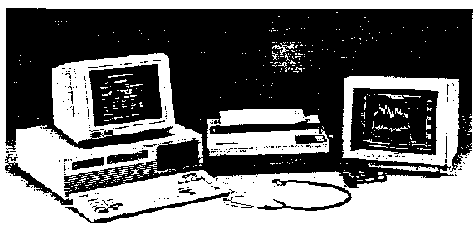Facial Retraining – Essential Elements
ESSENTIAL ELEMENTS FOR EFFECTIVE NEUROMUSCULAR RETRAINING
Proper Treatment Environment
A quiet, individual room where therapy is conducted without distractions, establishes the proper learning environment.39,68 Anyone who has worked with facial paralysis patients is aware of the social stigma associated with this disability. Privacy is essential to create a “safe” environment for the patient who is embarrassed by his or her appearance. In this setting, psychosocial issues can also be discussed.
Sensory Feedback
Optimal learning depends on making maximal use of sensory information. Accurate, proportional and immediate sensory feedback provides the information required for modification and learning of new motor patterns.38,70 Visual (mirror) feedback is the most commonly used type of feedback in the clinic and at home. Inexpensive and portable, mirrors provide the patient with immediate feedback regarding performance. Proprioception provides internal facial position sense and is essential for accurate exercise practice and generalization of movements outside of the clinical setting.
Surface EMG Feedback
Just as intraoperative EMG facial nerve monitoring has led to modifications in surgical techniques by providing the surgeon with specific feedback,71 sEMG monitoring of facial muscles during NMR can lead to modification of facial movement patterns by providing the patient with feedback regarding motor performance. It is an important tool in neuromuscular retraining of facial paralysis.48,49,68,70
Also referred to as EMG biofeedback or EMG rehabilitation (EMGR), its purpose is “to bring the normally unconscious control of specific muscles under conscious control”.72 Surface EMG feedback provides the patient with immediate information regarding the rate and strength of the muscle contraction in real time. As part of a neuromuscular retraining program sEMG feedback is used as an evaluative, as well as therapeutic tool to:
– Increase activity in weak muscles
– Decrease activity in hyperactive muscles and
– Improve coordination of muscle groups.
Surface electrodes placed on the skin over the muscle(s) being monitored detect electrical activity produced by the muscle contraction. The amplified signals are displayed on a video monitor. Patients observe this feedback and vary the manner in which they produce a specific movement until the desired pattern is achieved. By correlating information from sEMG feedback with mirror and proprioceptive feedback, the patient learns to reproduce the new movement patterns outside of the clinical setting and within the context of the home exercise program.
Specific protocols for the use of sEMG feedback have been outlined elsewhere.68,70,73 All stress the importance of achieving normalized resting tone (in cases of hypertonicity or synkinesis), symmetry and isolated responses.
Figure 2
Figure 2: The neuroEducator II, produced by Therapeutic Alliances Inc., has been developed specifically for neuromuscular retraining and provides information from 4 channels simultaneously. Especially helpful in the treatment of synkinesis, homologous muscles are monitored bilaterally with the primary movement represented by a trace of one color and the synkinetic movement represented by another. Immediate comparison can be made enabling the patient to modify motor strategy on the next trial.
Home Program
Clinic treatment sessions are designed to identify, develop and refine the movement patterns that will be of greatest benefit to each patient. Patients practice these movement patterns repeatedly in the clinic to assure accuracy. Through the home program, patients consistently practice the strategies learned in the clinic. The home program usually requires 30 to 60 minutes of concentrated practice per day. No specific number of repetitions are given. Several “good trials” of an exercise practiced with complete focus and concentration are better than many trials done without adequate attention, or by rote.68 Each trial is analyzed and modified based on self-observation.
Patients record detailed instructions and observations in a notebook or on audiotape as the home program is developed. A videotape recording demonstrating the patient performing his own exercises is made for home reference, especially if return visits to the clinic are infrequent. The video aids in correct practice and serves as a baseline to measure functional progress between treatment sessions.

